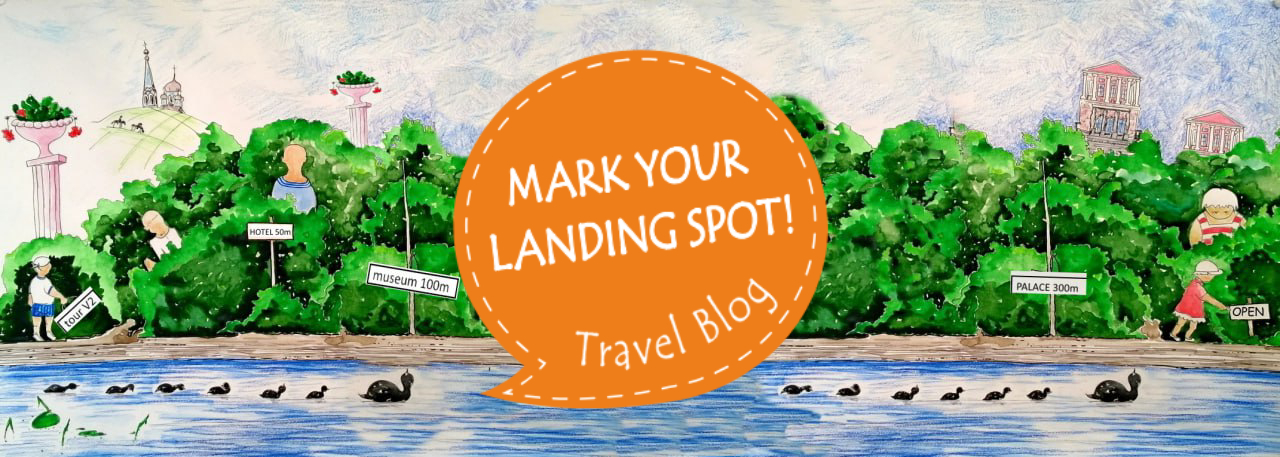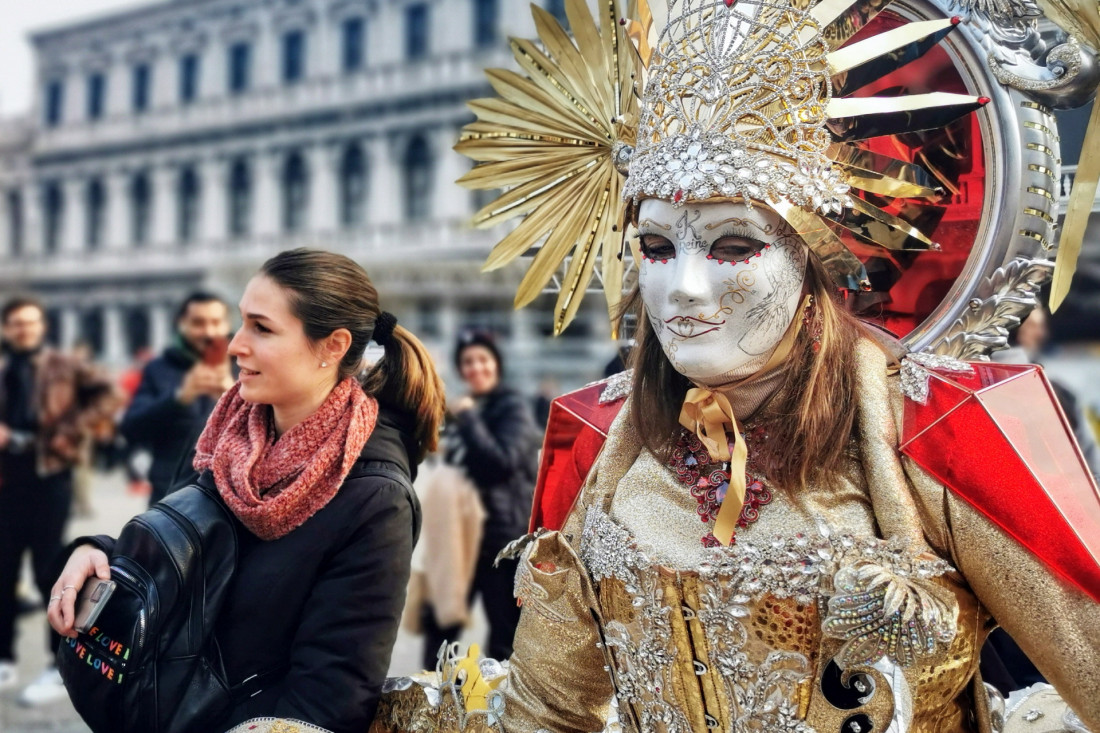The Venice Carnival takes place each February, sometimes spilling into late January or early March. For two weeks, Venice transforms into a giant stage: masked figures glide along the canals, locals and visitors dress to impress, and shop windows sparkle under the winter sun. This year, I finally joined the party.
Here’s what I learned.
1. Where to Stay for the Venice Carnival (Without Going Broke)
I booked the trip two weeks before departure — not ideal, I know. Since I also planned to visit other cities, I skipped Venice itself and stayed in Ferrara, a lovely town with a castle and normal prices.
My 7-night apartment cost €450 — which would’ve barely covered three nights in Venice. If I go again, I might try Padua or Treviso for variety. Pro tip: trains from all three run often and are affordable.
2. Getting to the Venice Carnival by Train
From Ferrara to Venezia Santa Lucia, it takes 1 to 1.5 hours depending on the train. Tickets cost €10–16 and trains run frequently.
Santa Lucia station itself is busy but well-equipped: cafés, shops, snack bars — and yes, a paid restroom (€1). Just outside the doors? Boom — the Grand Canal.
3. Your First View: The Grand Canal
Step out of the train station, and the first thing you see is water. Not a puddle — the Grand Canal, Venice’s main “street.” It cuts through the whole city.
There’s no regular transport here: no cars, no buses. You either walk or go by boat — preferably with style.
4. What to Wear (Hint: Check the Forecast)
The Carnival happens in winter — think mist, drizzle, and the kind of cold that sneaks under your scarf. I was there on February 8th. It was gray all day, and the wind picked up by evening.
Still, I survived in a light jacket and long sleeves. I packed an umbrella and poncho, which remained untouched — but better safe than soggy.
5. Planning Your Walk (Spoiler: You’ll Get Distracted)
I set off along the Grand Canal toward Piazza San Marco — it’s just 2 kilometers. Should’ve taken 30 minutes.
It took me four hours.
Blame the churches, bridges, palaces, street food, and the dozen or so strangers in velvet masks who wanted to chat or be photographed. Most tourists follow this route, so I didn’t even need a map — just went with the crowd.
6. Food: Step Away from the Main Drag
Just 200–300 meters off the main path? Total quiet. I found a cozy canal-side restaurant where pizza cost €11–12, seafood pizza €15, and espresso €2.50. The food was great, and I only had to share the space with three locals and a bored-looking waiter. Perfection.
7. Toilets Are Rare (And Not All Cafés Have Them)
Restrooms are few and far between — and often have lines. Sure, you can try your luck at a café, but ask first before ordering coffee: not every place has a bathroom. Yes, I learned this the hard way.
8. Do You Need a Mask?
Short answer: no.
Most tourists dress normally. You’ll see some simple masks (sold everywhere for €10), usually made in China. Authentic handmade ones — with feathers, gold leaf, leather — can cost anywhere from €150 to €1000.
Want to go full Venetian noble? You can rent a head-to-toe costume for €180–800 per day. But if you’re just there to enjoy the vibe, your face will do just fine.
9. Spotting Costumes (And Getting the Photo)
The closer you get to Piazza San Marco, the more costumed people you’ll see — posing, twirling, brooding dramatically.
I counted 35 elaborate outfits and managed to photograph 27. The most impressive ones draw little crowds, so be patient. And while you’re staring into feathers and sequins — watch your bag. Pickpockets love a distracted tourist.
10. The Heart of the Venice Carnival: Piazza San Marco
I spent two hours just wandering the square and the waterfront: taking photos, admiring the cathedrals, people-watching.
Tourists from everywhere — especially Italy, France, and the UK — gather here.
Prices? High. A gondola ride runs about €90 for 30 minutes (for up to four people). Restaurant prices near the square are even bolder.
11. Back to the Station (With a Vaporetto View)
By evening, Piazza San Marco hosts free events, concerts, and open-air discos. But I left that for next time and took a vaporetto back up the canal — a public boat with indoor seating and open decks.
The ride took 20 minutes, with several scenic stops. It got crowded fast — some people couldn’t even get on. A single ticket costs €9.50, a 24-hour pass — €25. Buy them at kiosks near docks or in newspaper/tobacco shops.
12. Stocking Up at the Supermarket
Just 200 meters from the station, to the right when facing the building, is a DeSpar supermarket. Good selection, fair prices — perfect for grabbing evening snacks.
Around 18:00, the city starts to empty. The tourists disappear. And for a little while, Venice feels like it’s all yours.
So… Is the Venice Carnival Worth It?
Absolutely. It’s chaotic, magical, and surprisingly doable — even if you’re not wearing brocade.
I expected long lines and high prices. I got spontaneous chats with strangers in capes, misty morning walks along silent canals, and a €2.50 espresso with a million-euro view.
Would I go again? In a heartbeat.
Just… maybe I’ll book a bit earlier next time.
Want to check next year’s dates or events? You’ll find them on the official Venice Carnival website.






